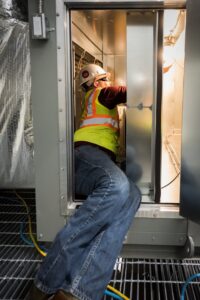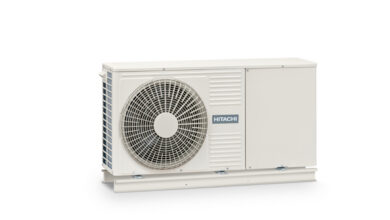 When it comes to building operations, there’s a saying similar to a reactive maintenance plan – if it isn’t broken, why fix it? However, our clients really shouldn’t be taking that kind of gamble with their facilities.
When it comes to building operations, there’s a saying similar to a reactive maintenance plan – if it isn’t broken, why fix it? However, our clients really shouldn’t be taking that kind of gamble with their facilities.
It’s possible to avoid sudden equipment failures and unplanned downtime with a planned approach to maintenance. A predictive model is even better, but both will save clients money over the life of a building and help improve overall occupancy comfort.
According to McKinsey, predictive maintenance can reduce machine downtime by 30-50% and increase machine life by 20-40%. That’s reason to take note.
You’re likely familiar with the three traditional approaches to maintenance – reactive, planned and proactive. However, with new technology like Telemetry, predictive maintenance is now an option. Using facility analytics, data is collected from sensors on a building’s existing building automation system to better diagnose malfunctions and find energy savings opportunities. When leveraging this critical information, service and outcomes improve, leading to lower operating costs for owners, lower energy costs and greater occupancy comfort.
Equipment reliability, efficiency and performance increase while moving a maintenance approach from reactive to planned and from proactive to predictive. Think about a car engine. Do you change the oil after the second oil light starts flashing and you smell burning oil? That would be a reactive strategy.
It’s no surprise that businesses are careful with their spending around maintenance and facility management. Rightfully so, owners care about getting a return on their investment. A robust maintenance program should be seen as just that – an investment. What makes a difference in the plan is the amount of time allocated to overseeing the mechanical systems. Minimal investments rarely bring great returns.
For clients, a dynamic maintenance plan can deliver:
- Lower energy use
When systems work harder to condition a space, energy consumption and cost steadily increase. Neglecting necessary HVAC maintenance ensures a steady decline in a system’s performance. A reduction in airflow and heat transfer can also be found in poorly or non-maintained cooling systems. Hence, the opposite is true of a robust plan – it increases efficiency and lowers energy use.
- Longer equipment life
Proper maintenance can add years of life to heating and cooling equipment, which will help reallocate capital budgets toward other projects. The longer a capital expense can be delayed, the higher the ROI.
- Reduction, disruptions and downtime
When a building’s equipment performs as intended, disruptions and downtime are lessened. Performing proper HVAC maintenance helps keep things functioning and operating at peak levels. For example, when you look at a data center, where certain temperatures or humidity levels are required, this becomes especially important. The same goes for hospitals, specifically operating rooms. When an operating room shuts down, there aren’t just hundreds of thousands in revenue lost, there is the possibility of losing lives. Predictive or planned maintenance can help ensure proper levels are met, especially in critical facilities.
- Prevention of costly repairs
Costly, variable expenses brought about by untimely, yet necessary building systems repairs are not fun. A robust or predictive program can detect small issues before they become costly repairs and often, prevent those issues from happening in the first place. The story often told is low-cost maintenance programs are put in place to flip filters. With an in-depth inspection, a bad contactor may be found, for example, which may prevent an electrical burnout on a compressor costing the owner thousands.
- Healthier environment, increased comfort & productivity
Energy spend and equipment life matter. So too does the wellbeing of building occupants. Thorough maintenance can ensure building systems are working properly to improve indoor air quality, provide healthy ventilation and improve temperature and humidity control. Bacteria, viruses, fungi and allergens thrive in spaces where relative humidity is not optimized, whereas proper ventilation helps dilute and remove contaminants. Ensuring proper operation creates a more pleasant and healthy atmosphere, as well as more comfortable and productive employees.
Encouraging clients to invest in a robust maintenance program will best position their building and maintenance teams for fewer headaches, more savings and greater occupancy comfort. It’s an investment they can’t afford to pass up.
Zach Von Schneidau is director of Sales, Service + Building Automation at Harris.


